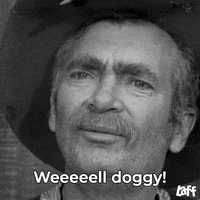Seems to me to me that quite a large temperature rise would be needed to increase pressure that much. Grip would certainly improve but I would expect to the detriment of tire longevity.
I admit I have no experience dealing with pressures in this fashion. I usually do 40F and 42R (cold) and call it a day.
Do you use TPMS or an infrared temperature gun to assess tire temperature?
Racers typically warm their tires up to 70-80°C with tire warmers for maximum grip, so I'm not too worried about overheating them ;-)
Google the "10 20 motorcycle tire pressure rule" -- a commonly used method of fine tuning tire pressure to suit individual needs. Basically, the recommendation is that the front tire pressure should increase 10% hot over cold, and rear should increase 20%. If the increase is less, decrease cold pressure. If the increase is more, bump it up. To use my cold numbers of 33 an 36, if I follow that "rule", I should see about 36 and 40 when up to temperature. After a longer run, my front is in the right zone, but the rear got up to 41, suggesting I should add a touch to the rear.
Now, I was lightly loaded. With gear on, I'm still under 200lbs and I was only carrying my overnight "go" bag and some rain gear. If I was 2 up and loaded for bear, I would expect to need higher cold pressures. Your 40/42 could well be correct for YOUR weight and load, but to verify that you should check them again hot and aim for ~44/50. If they don't get that high, then you are starting too high -- at least, according to the "rule". If your aim is to maximize tread life at the expense of grip -- a legitimate objective if your riding is primarily good, dry roads -- then accept less of a temperature rise.
This year I added a TPMS, and the pressure readings are pretty accurate. Way more convenient than a manual tire pressure gauge. The temperature readings are useless, IMHO. They are reasonably accurate (within 1°C) comparing to ambient temperature after sitting a few hours but more representative of the rim temp than the tire temp in use, and the rim is a giant heat sink spinning in free air. Internal sensors might be slightly closer, but again, at best they measure the internal air temperature, not the rubber temperature and the air is simultaneously cooled by the rim while heated by the tire.
A non-contact ("laser") thermometer or Thermal Imaging Camera can be more accurate -- BUT: for complete accuracy, one must compensate for emissivity of the object. A tire probably has an emissivity coefficient of around 0.90. If your thermometer/TIC is similarly compensated, great, you are good to go (well, assuming the thermal sensitivity and range are adequate). And in all honesty, even if it's off a bit, it's probably close enough for government work -- this isn't rocket science and we don't need the temperature down to 3 decimal places.
Yesterday morning, 10 minutes after a 2-1/2 hour ride, ambient air temp was up to 12°C, Front TPMS showed 14°C, Rear TPMS indicated 24°C and the TIC registered 26° and 27°C respectively.







